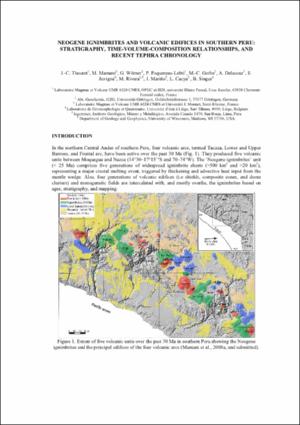Please use this identifier to cite or link to this item:
https://hdl.handle.net/20.500.12544/3418Files in This Item:
| File | Description | Size | Format | |
|---|---|---|---|---|
| Thouret-Neogene_ignimbrites_volcanic_edifices-Peru.pdf | Artículo de congreso | 2.55 MB | Adobe PDF | View/Open |
This item is licensed under a Creative Commons License












